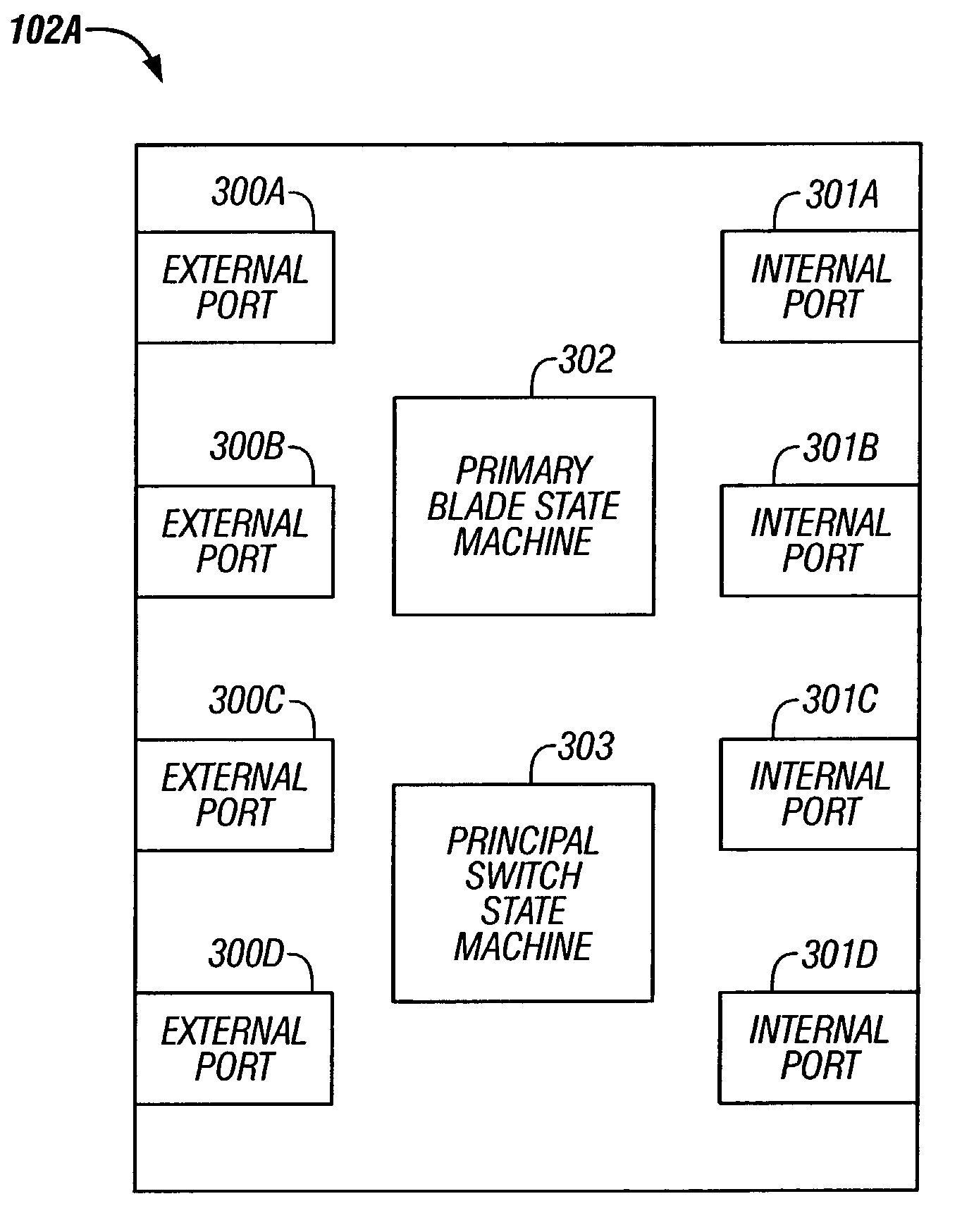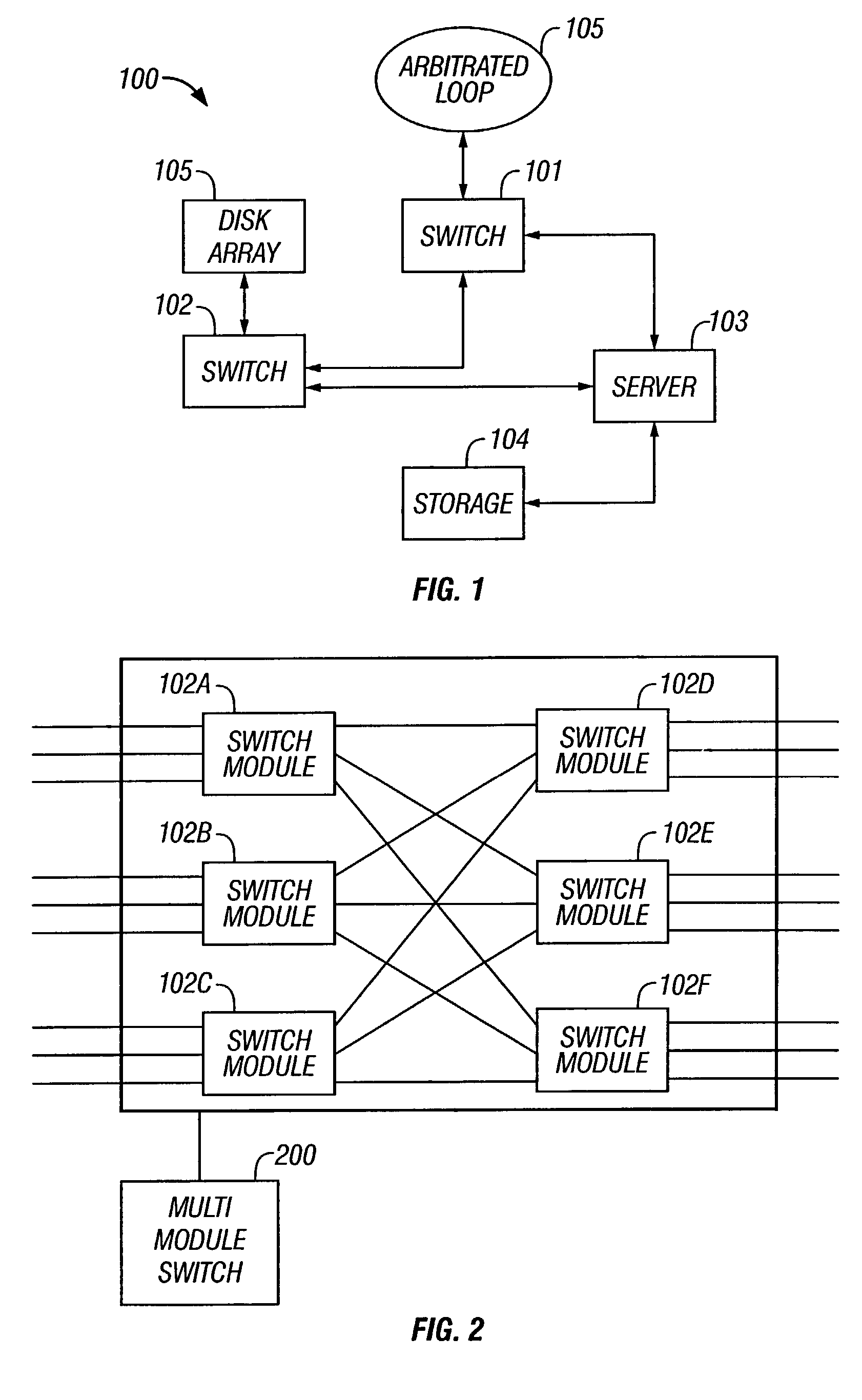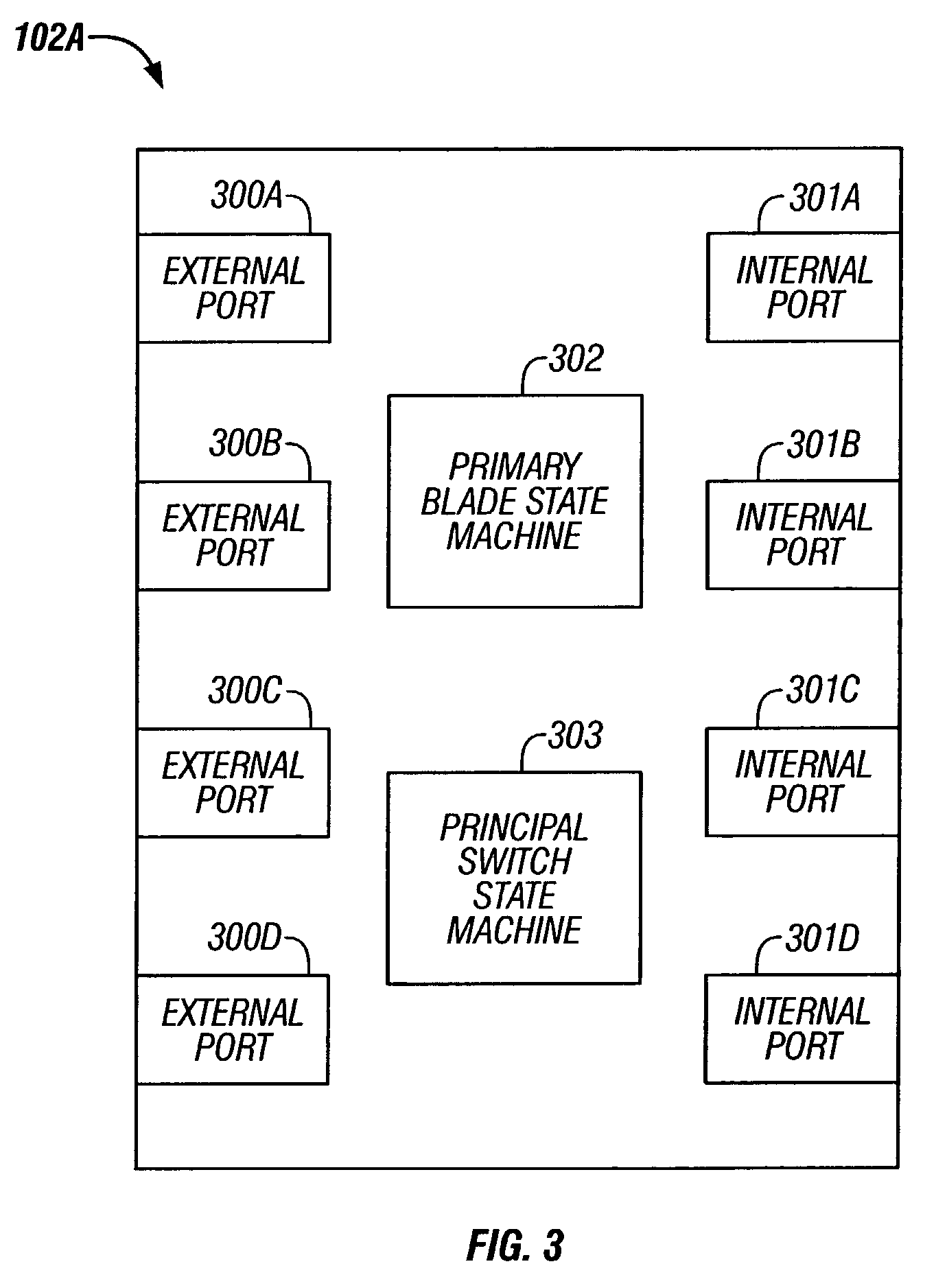Method and system for dynamically assigning domain identification in a multi-module fibre channel switch
a multi-module, domain-based technology, applied in the field of network systems, can solve the problem that current fiber channel standards do not provide a mechanism for combining multiple switch modules
- Summary
- Abstract
- Description
- Claims
- Application Information
AI Technical Summary
Benefits of technology
Problems solved by technology
Method used
Image
Examples
Embodiment Construction
[0039]Definitions:
[0040]The following definitions are provided as they are typically (but not exclusively) used in the fibre channel environment, implementing the various adaptive aspects of the present invention.[0041]a. “Blade”: A module in a multi-module fibre channel switch.[0042]b. “Blade_ID”: A unique identifier for identifying a switch module.[0043]c. “B_S_TOV Timer”: A timer to detect inactivity during primary blade selection.[0044]d. “E-Port”: Expansion port[0045]e. “EBP”: Exchange Blade Parameters, created by a Multi-Blade Protocol.[0046]f. “EFP”: Exchange Fabric Parameters as defined by FC-SW-2.[0047]g. “Fibre channel ANSI Standard”: The standard describes the physical interface, transmission and signaling protocol of a high performance serial link for support of other high level protocols associated with IPI, SCSI, IP, ATM and others.[0048]h. “FC-1”: Fibre channel transmission protocol, which includes serial encoding, decoding and error control.[0049]i. “FC-2”: Fibre cha...
PUM
 Login to View More
Login to View More Abstract
Description
Claims
Application Information
 Login to View More
Login to View More - R&D
- Intellectual Property
- Life Sciences
- Materials
- Tech Scout
- Unparalleled Data Quality
- Higher Quality Content
- 60% Fewer Hallucinations
Browse by: Latest US Patents, China's latest patents, Technical Efficacy Thesaurus, Application Domain, Technology Topic, Popular Technical Reports.
© 2025 PatSnap. All rights reserved.Legal|Privacy policy|Modern Slavery Act Transparency Statement|Sitemap|About US| Contact US: help@patsnap.com



